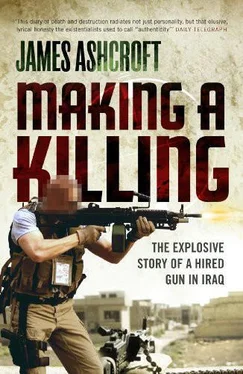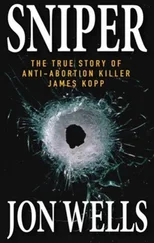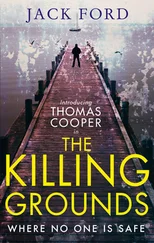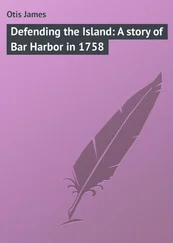With the disused flyover crossing the road between the gates and good cover from the buildings, this entry point was popular with the insurgents and had been hit so many times the guards had learned to shoot first and answer questions later.
The gates were each manned by a squad of six US soldiers supported by M1 Abrams battle tanks with mine-clearing bulldozer blades bolted to the front and pet names scrawled down the barrels in white paint; ‘Al Qaeda Killer’ and ‘Al Capone’ were normally on the gate but today two different tanks were on duty.
About 100 metres behind each checkpoint, well inside the Green Zone, both facing down the highway towards us, were two Bradley M2 armoured fighting vehicles crewed by a commander, gunner and driver, and capable of carrying six battle-ready infantrymen in the stuffy interior. If a rebel driver did get through either one of the gates, he’d be going head to head with an M1 and a Bradley.
I was crawling along, aware of the glint of binoculars above the turret on the nearest Abrams. The American flag moved leisurely on the breeze, the guards observing our approach.
At the exit gate, a car facing the wrong way had stopped and appeared to be trying to enter against the flow of traffic. The guards were waving the car away, directing it towards the correct gate, towards us.
Suddenly, the driver leapt from the vehicle and sprinted away, weaving between the stopped cars waiting to be waved forward by the troops. The sprinter headed towards the buildings. He was running fast, but the scene appeared to be in slow motion and in silence.
The silence ended with a terrific explosion as the car vanished in a violent cloud of smoke and flame.
I was momentarily deafened.
The soldiers at the far exit gate instantly disappeared and I wasn’t sure if they had taken cover behind the earth-filled chest-high Hesco barriers or whether they had been blown back by the blast. Either way they were not doing anything constructive at that moment.
The car bomb was followed instantly by small-arms fire from the flat-roofed buildings.
My hearing had obviously come back because I could hear the whine of ricochets in the still air. The muzzle flashes came from inside the rooms which told me two things: these guys had had some training, they weren’t just leaning out of the windows and shooting wildly; and they were firing AKs, guns notorious for their muzzle flash.
We were the only vehicles on our side of the road. Neither the Opel nor the Nissan were armour-plated. As this thought ran through my mind and I prepared to gun the engine to get us out of there, Seamus gave a different order…
‘De-bus!’ he yelled.
He was diving out of the door as he spoke. He rolled over several times, his AK trained on the buildings. First rule when there’s enemy contact is to return fire. You match aggression with aggression. Various studies say that the initiative in firefights is won in the first three to five seconds.
I gave three toots on the horn to warn the South Africans to de-bus, then scrambled out behind Seamus dragging my AK. In my haste, the Browning slipped from the mag pouch and clattered on to the road. I ignored it. I dashed to cover behind the concrete blocks and opened up on the windows from where I had seen the sparks of muzzle flash. If you hit the enemy that’s a bonus. The British Army constantly drills in emphasis on aimed fire and the use of sights, even during suppressive fire. Even if you don’t hit anyone, there had better be enough lead thumping whatever cover the enemy has to stop him from sticking his head up, which allows you to retain control of the firefight.
Etienne pulled up to cover our left. In this way, the Nissan would act as a blocking vehicle and would avoid us becoming the inviting target of vehicles in a straight line. As the South Africans piled out of their vehicle, I judged that they were just on the edge of the killing area: the arcs of fire coming from the buildings.
Les hauled Lori out of the car like a sack of potatoes. She wasn’t screaming and seemed in control. She clung to Les as he dragged her behind the front tyre and engine block, the safest place. She spread out on her stomach, hands over her head. Les straddled her, knees either side of her shoulders, his body protecting her torso, his AK trained on the rooftops as he looked for a target.
Short bursts of fire peppered the wall behind us but I didn’t hear any hits on our two vehicles. Vehicles are bullet magnets and although our standard drill was to get away from them as fast as possible, in this situation there simply wasn’t anywhere to go. At least we had the cover of the low concrete barriers and Seamus and I were tucked up behind them.
A lot of security contractors had been killed in friendly fire and, as I glanced around the killing zone, my main concern wasn’t the insurgents, but the US soldiers on the gate and the gunners on the Abrams 100 metres away. The Abrams carries two 7.62 machine guns, a .50 cal heavy machine gun and, the main armament, a 120mm cannon with enough power to blow our little convoy off the road without leaving a grease spot behind.
As I was thinking about this, my thoughts appeared to provoke the Abrams commander. He released a single round from the .50 cal which exploded through the front windscreen and out of the rear window of the Opel with a colossal bang before disappearing down Route Irish at twice the speed of sound. If this had been a movie, the Stars and Stripes Seamus had taped on the screen would now have a neat hole in it, but the flag remained untouched on the surviving section of cracked glass.
The shell missed the Nissan. Etienne had done a good job parking.
I was partially deafened from the shooting and was hearing everything through the muffled filter that descends as soon as you fire your first shot without ear defenders, but I was very aware of the bullets cracking over my head from the other side of the road. Bullets shot at you have a completely different tone to the thousands of rounds I had fired down the range. The familiar smell of cordite flared in my nostrils.
Time goes into a strange state when your adrenaline is pumping. Only a few seconds had gone by, but those seconds were stretched like elastic. All your training and experience kicks in as the temperature heats up. Seamus and Les were shouting at the checkpoint, waving their CPA pass-holders and pointing at the enemy. They were obviously Westerners, but the air was full of dust, the day was grey, and the Americans were taking no chances.
I was counting rounds as I poured fire back at the enemy. It is a cliché to say that you never feel more alive than when you hear bullets whizzing by your ears, but it’s true. Your back’s wet. Your armpits are sopping. You’re sweating but oddly cool. Your mind is racing as your training prioritises your actions and every second is charged with control and focus. When the next second may be your last, I would like to say that the present second is long and lusty and precious. But all you are really thinking about is your next magazine and did I get that bastard or did he just drop into cover?
Maybe at the very back of your mind there is a flitting promise to yourself that if you get out of this alive you’ll go home to some shitty civilian job and never complain about being bored again. You are concentrating on keeping your front sights posted on the bad guys and your peripheral vision on the men at your side, shouting to co-ordinate your fire and your next potential move. It was bad news that we were stuck in the middle of the road with nowhere to move to. The good news was that the enemy was catching it far worse than us.
The Americans at the gate were under fire from the buildings, but they were anxious about us in case this was some ingenious twin-pronged assault. They could see that our weapons were pointed at the buildings, not them. But they had been trained to recognise AK-47s, the trademark terrorist weapon, and conditioned to open fire the moment they saw one.
Читать дальше












